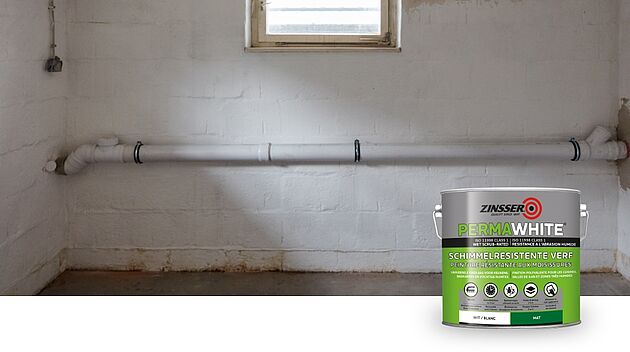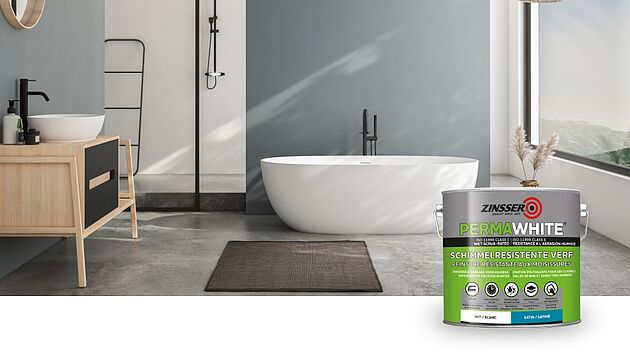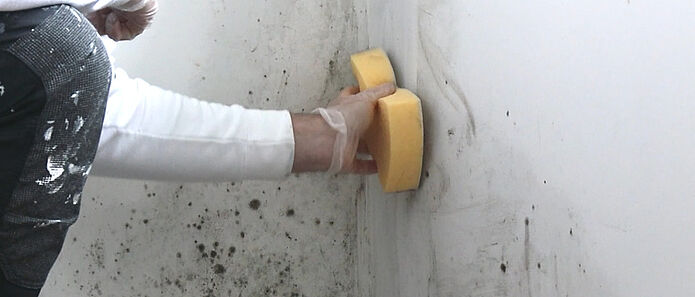
How to paint over mould
Bathrooms, kitchens, laundry rooms, basements ... If damp indoor spaces are not properly ventilated, mould quickly lurks around the corner. If you need to paint a surface with mould, there are a few things to consider. We explain how to tackle such a paint job.
In damp environments with little ventilation, mould can spread quickly. This, in turn, can lead to serious health problems, such as allergies and respiratory problems. It is therefore very important to tackle mould problems effectively. Even as a painter. From choosing the right product over substrate preparation to painting itself, these are the steps to follow.
1. The right product: Zinsser PermaWhite
Zinsser PermaWhite is a mould-resistant primer and topcoat in one. It adheres to most substrates and provides a strong, washable, abrasion-resistant finish (ISO 11998 - class 1) that resists moisture and dirt absorption. Zinsser PermaWhite is ideally suited for ceilings, walls and other indoor surfaces in areas with permanent high humidity, frequent temperature fluctuations and insufficient air circulation. It is available in matt and satin.
PermaWhite Matt
Choose Zinsser PermaWhite Matt for areas with high humidity where a durable finish with low gloss is desired, for example finished basement areas.
PermaWhite Satin
Choose Zinsser PermaWhite Satin for high-moisture areas with high exposure to wear and frequent scrubbing, e.g. bathrooms.
2. Preparing the substrate
Painting a surface with mould starts with thorough preparation. Follow these steps to optimally prepare the substrate.
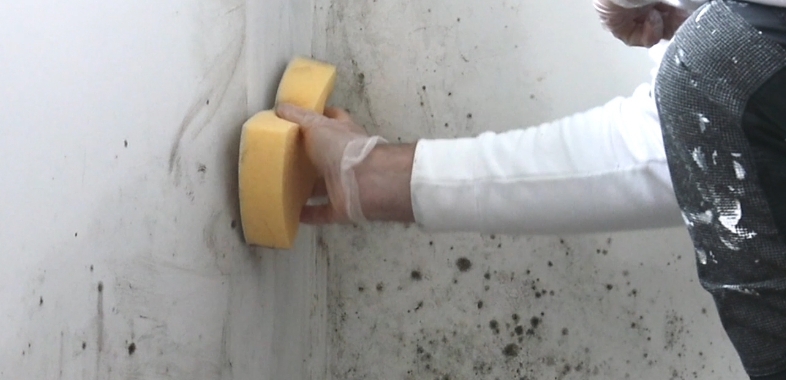
Step 01
Remove mould
Thoroughly remove all mould and dirt with a mould cleaner. Make sure the surface is completely dry before proceeding.
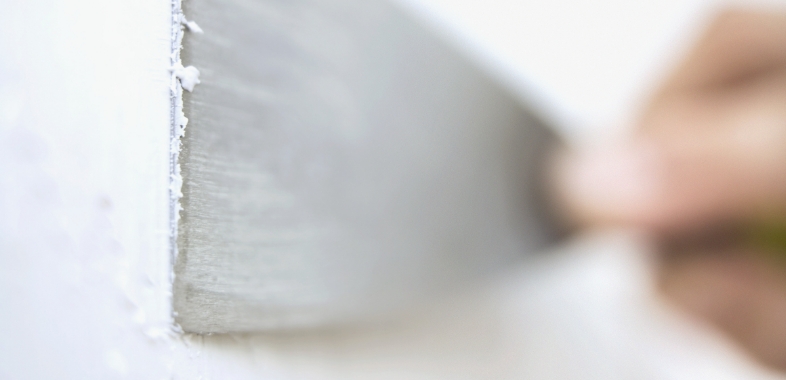
Step 02
Smoothing away unevennesses
If there are irregularities, cracks or holes in the surface, seal them with a filler. Let the filler dry and sand the surface.
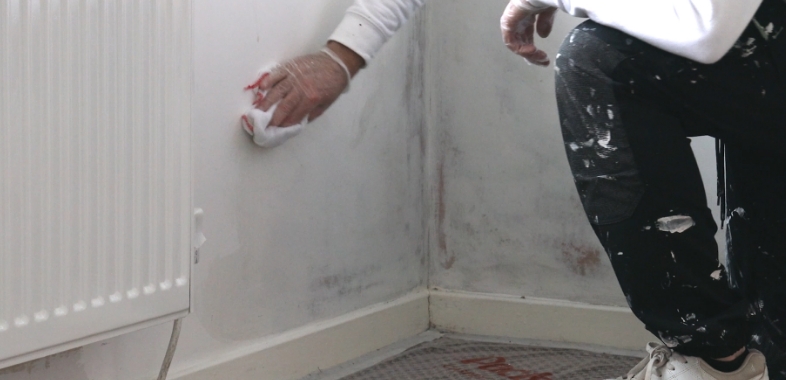
Step 03
Remove dust
Make sure the surface is clean, dry and dust-free. This will improve the adhesion of the (primer and) paint.
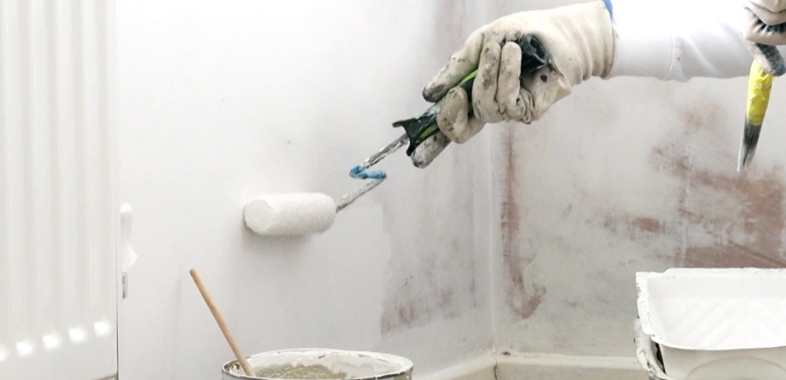
Step 04
Apply primer (optional)
If dirty stains remain after cleaning, first apply a high-quality primer, such as Zinsser B-I-N Aqua.
3. Painting the substrate
Now that the substrate is ready, you can start applying Zinsser PermaWhite. Follow these steps for optimal results.
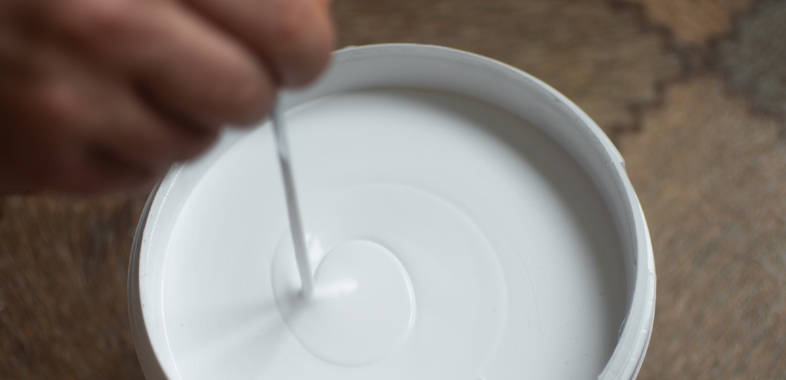
Step 01
Prepare paint
Stir the paint well. This will ensure consistent colour and texture.
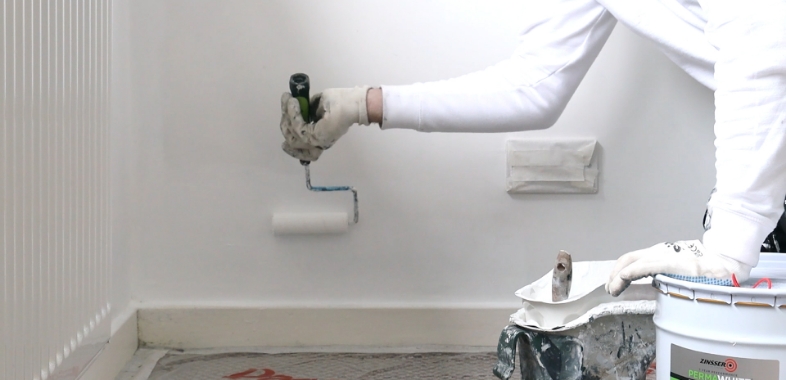
Step 02
Apply first coat
Apply the first coat. This can be done with a brush, roller or paint sprayer. Allow this layer to dry for at least 2 hours.
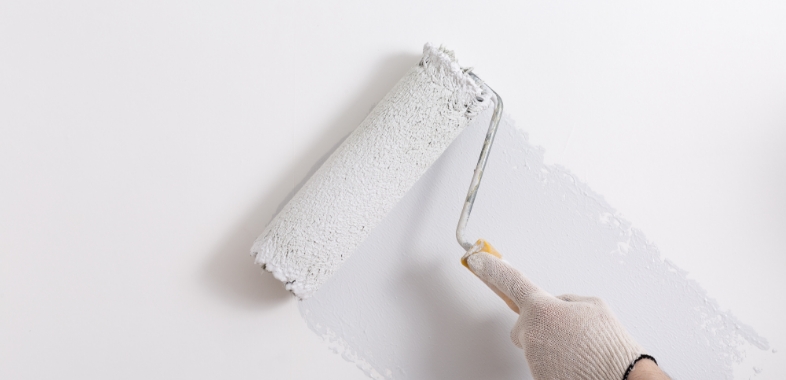
Step 03
Apply second coat
Apply a second coat. After 7 to 10 days, the paint is fully cured.
Conclusion
Zinsser PermaWhite is an excellent solution to protect substrates from mould growth. Depending on the room and the desired finish, you can choose Zinsser PermaWhite Matt or Satin. Apply two coats for a durable result that is not only beautiful, but also actively prevents the growth of mould.
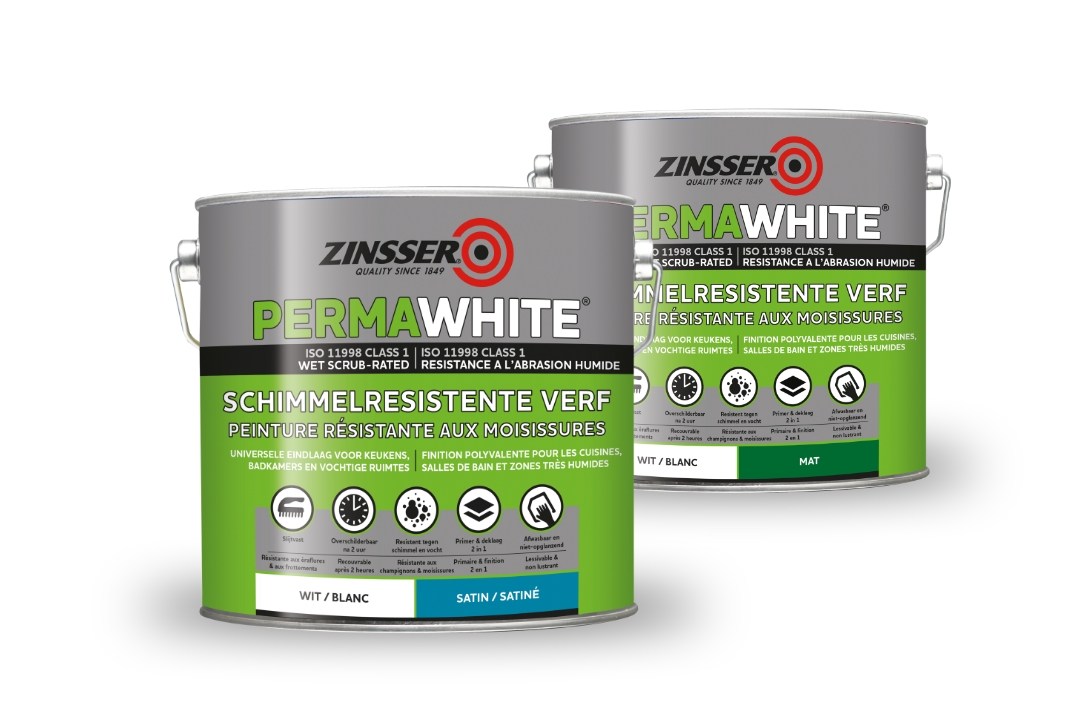
Zinsser Perma-White
- Consumption: 7 to 10 m² / l
- Can be handled: 30 min.
- Can be painted over: 2 hours
- Hardened: 7 to 10 days
- Packaging: 1 l - 2.5 l - 5 l - 10 l
- Colours: white (adaptable to pastel shades)
- Application: painting - rolling - spraying

